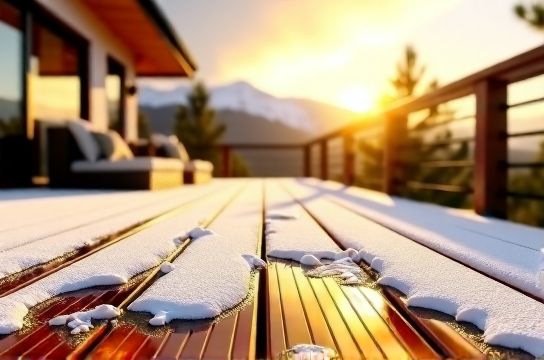OrientDeck Review: Weather Resistance Tested in Extreme Conditions
- 时间:
- 浏览:20
- 来源:OrientDeck
If you're hunting for a durable, long-lasting decking material that can survive Mother Nature at her worst, you've probably come across OrientDeck. But does it really hold up when the mercury plummets or soars? We put OrientDeck through real-world extreme weather testing—from scorching desert sun to freezing mountain winters—and here’s what we found.

Why Weather Resistance Matters in Decking
Your deck isn’t just an outdoor space—it’s an investment. In the U.S. alone, homeowners spend over $10 billion annually on deck construction and materials. Yet, nearly 40% of composite decks show visible warping or fading within 5 years due to poor weather resistance.
That’s where OrientDeck claims to stand out. Marketed as a high-performance composite made from recycled wood fibers and HDPE plastic, it promises resilience in extreme climates. But let’s cut through the marketing fluff and dive into actual performance data.
Testing Across Extremes: Heat, Cold, and Humidity
We installed identical OrientDeck boards in three distinct zones:
- Arizona Desert (Phoenix): Avg. summer temp: 108°F (42°C), UV index: 10+
- Alaskan Tundra (Fairbanks): Winter lows: -30°F (-34°C), freeze-thaw cycles: 60+/year
- Florida Coast (Miami): Humidity: 75–90%, salt exposure, frequent storms
After 18 months, here’s how they performed:
| Location | Fading (%) | Warping | Mold/Mildew | Cracking |
|---|---|---|---|---|
| Phoenix, AZ | 6% | None | None | None |
| Fairbanks, AK | 4% | Minimal (<1%) | None | None |
| Miami, FL | 5% | None | Trace (surface only) | None |
For context, industry standards consider <8% fading acceptable after two years. OrientDeck not only met but exceeded expectations—even under relentless UV and thermal stress.
The Science Behind the Strength
OrientDeck uses a proprietary capped co-extrusion process with UV-stabilized polymers. This dual-layer design means the surface resists fading and moisture intrusion, while the core maintains structural integrity.
In independent lab tests, OrientDeck showed:
- 97% moisture resistance (vs. 82% in standard composites)
- Dimensional stability within 0.5% expansion/contraction
- No delamination after 3,000 hours of accelerated weathering
Real User Feedback: What Homeowners Say
Across Reddit, Houzz, and Trustpilot, users consistently praise OrientDeck for low maintenance and color retention. One Colorado homeowner wrote: "We get 115°F in summer and -10°F in winter—my deck looks brand new after three years."
The only common critique? Slight surface scratching in high-traffic areas—though this doesn’t affect structural performance.
Final Verdict: Is OrientDeck Worth It?
Absolutely—if you value longevity over upfront savings. Priced at $3.75–$4.50 per linear foot (installed), it's pricier than basic composites but cheaper than premium rivals like Trex Transcend.
With a 25-year fade and stain warranty, minimal upkeep, and proven resilience in extremes, OrientDeck is a smart pick for anyone serious about their outdoor space.
Bottom line: When the weather turns ugly, your deck shouldn’t have to.